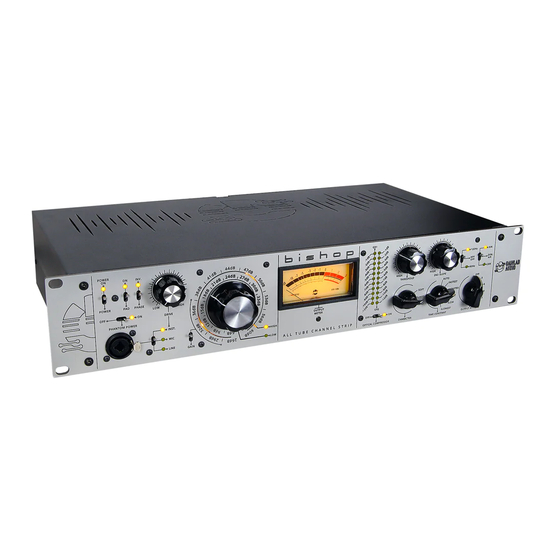Gainlab Audio BISHOP Manual de inicio rápido - Página 8
Navegue en línea o descargue pdf Manual de inicio rápido para Sintetizador Gainlab Audio BISHOP. Gainlab Audio BISHOP 10 páginas.
También para Gainlab Audio BISHOP: Manual (15 páginas)

natural even under extreme operating parameters and level changes. In
terms of controls, the adjustment of the first threshold point is achieved
through the
Threshold
knob, with the corresponding gain reduction value
indicated by the
meter labeled
GR1. The setting of the second threshold
point is accomplished using the
2ND Slope
knob, with the gain reduction
value for this indicated by
the GR2
meter.
As this isn't two separate compressors but rather a single extensively
parameterizable dynamics processor, the gain reduction for each slope
can change depending on the level distance between the individual
threshold points and how the audio material fills this range. Therefore,
it's advisable to review the first threshold point setting after adjusting
the 2ND Slope.
The Bishop's compressor primarily serves as a supplementary
component to the preamp. The setting of compression ratio and knee
value is done simultaneously using the
Character
switch, which offers
three levels (Soft/Medium/Hard). As you progress through the levels, the
compression ratio increases and the knee curve becomes sharper.
Adjusting the compressor's timing is achieved via the
Time Constant
rotary
switch, which offers six positions as presets. The first
automatic
mode attempts to determine the timings based on the nature of the
incoming audio material.
The remaining five positions offer attack and
release values from fastest to slowest. If you wish to use two Bishops
simultaneously while having both compressors engaged, it may be
necessary to link the compressors of the two units. This can be achieved
using the
SC.Link connector
located on the back of the Bishop, using an
asymmetric Jack-Jack cable. In terms of practical implementation, it's
advisable to proceed as follows:
